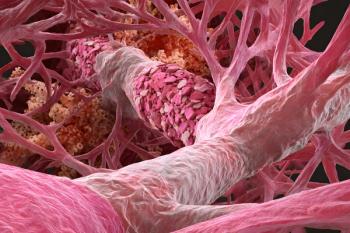
- MHE February 2025
- Volume 35
- Issue 2
A Key Ingredient to ‘Food is Medicine’: Standardization
Medically tailored meals are an appealing idea, but there is little regulation or standardization.
Although doctors prescribe pharmaceuticals for various ailments, they also understand that drugs are only one way to improve a patient’s health. Another is food. The “food is medicine” movement is not new, but it is gaining prominence. The idea is to bolster treatment by providing nutritious foods and medically tailored meals to address diet-related illnesses (diabetes, heart disease and some cancers) and supporting those with conditions such as cancer and kidney disease.
The food is medicine concept is wide-ranging, from specifically made, medically tailored meals to produce prescriptions to nutrition security programs such as the Supplemental Nutrition Assistance Program. One problem for payers — whether government programs, private insurers or philanthropies — is ensuring that the program provides nutritious and appropriate foods. What’s missing from this equation is standards.
The potential
Studies have shown that medically tailored meals can improve health metrics. A recent study by the
Another study showed that providing medically tailored meals for those with diet-sensitive conditions and activity limitations could save $13.6 billion in national healthcare costs, averting 1.67 million hospitalizations annually.
Drugs approved by the FDA undergo rigorous testing. “People go to the pharmacy and don’t question [quality] because it’s approved,” Sue Daugherty, R.D.N., L.D.N., CEO of MANNA, an organization providing these meals to people with serious illnesses, says. “With medically tailored meals, anyone can say they’re doing it and there’s no regulation on what that means.” There has been some controversy, however. Some medically tailored meals have been marketed as “dietitian approved,” including meals marked as “heart healthy” or “renal friendly,” that contain high levels of saturated fat, sodium and additives.
Gaining accreditation can assure payers and patients that the food includes nutritious components in the right quantities. “There has to be some type of regulation showing you’re getting what you were prescribed,” says Daugherty. MANNA was
MANNA has been providing patients with medically tailored meals since 2005. In 2023, they served meals to patients with 85 different illnesses. Diabetes is the disease required for most people entering the program. “Our research shows that we have [the] most impact on superutilizers — the 5% who cost the healthcare system 50% of the [healthcare] cost,” she says. These patients have complex needs. She is seeing an increase in patients with high-risk pregnancies or heart diseases receiving meals for whom low-sodium diets are recommended.
Standardizing how to identify a person’s social risk factors and using validated screening tools are important to appropriately refer patients to community-based providers, Denise Diaz Payán, Ph.D., M.P.P., an associate professor at the University of California Irvine Joe C. Wen School of Population & Public Health, says. “People are using all kinds of screening tools at their convenience,” she says. “You’ll hear feedback from facilities that they don’t have time, they don’t have a person to do the screening.”
Articles in this issue
11 months ago
How Can We Get Better?11 months ago
What Does ‘Cure’ Really Mean?11 months ago
‘You’re Beautiful’: Life After Double Mastectomy11 months ago
Want to Improve Patient Care? Waste Not the DataNewsletter
Get the latest industry news, event updates, and more from Managed healthcare Executive.




















































